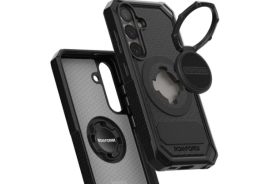With the ban of the Samsung Galaxy Nexus in place, at least for a week, Google's first Android 4.1 Jelly Bean-equipped device is not available. That means one device that could arguably rival iOS, or even surpass it, in terms of features can't be bought, but how do the phones compare spec-for-spec?
Hardware
The Samsung Galaxy Nexus measures 5.33 x 2.67 x 0.35 inches, weighing 0.3 pounds. By comparison the iPhone 4S measures 4.5 x 2.31 x 0.37 inches, weighing 0.31 pounds. The Galaxy Nexus comes in black, while the 4S also offers a white variant.
Google's Galaxy Nexus and Apple's iPhone 4S have 4.65 and 3.6-inch displays respectively, with the Nexus using a HD Super AMOLED display while the 4S uses the IPD LCD technology. Resolutions are 1280 x 720 on the Nexus while 960 x 640 on the 4S, though bear in mind the latter has a whole inch less in real estate. Both screens are capacitive and support multitouch.
Internals
Both devices support 3G, GSM and UMTS frequencies. The Galaxy Nexus supports 1900, 1800, 900 and 850 GSM frequencies while the iPhone 4S omits the 900 frequency in favor of 800 and also missed out on 1800. UMTS frequencies in the Galaxy Nexus are 2100, 1900, 1700, 900 and 850; the 4S supports 2100, 1900, 900 and 850. HSPA is also supported on both devices.
Both devices support 802.11n, 802.11g and 801.11b connections. 802.11n frequencies are 2GHz across both devices, with an additional 5GHz on the Nexus. GPS, Bluetooth - 3.0 on the Nexus and 4.0 on the 4S - mobile tethering and hotspot functionality are in both devices.
Both devices have relatively old processors: the Nexus uses a dual-core 1.2GHz, and the 4S a 800MHz processor. RAM is 512MB in the 4S, and 1GB on the Nexus S.
Storage is 16GB, 32GB and 64GB in the iPhone 4S; the Galaxy Nexus offer 16GB and 32GB of storage. External storage is not available in either device.
Also included on both smartphones a 3.5mm headphone jack; other ports are micro-USB and iPod connections for the Nexus and 4S respectively, and there's also video out support on the 4S. For the Galaxy Nexus, buy a MHL adapter.
Cameras
On the front is a 0.3-megapixel VGA camera on the 4S, and a 1.3-megapixel camera on the Nexus, with the rear camera on the 4S 8 megapixels with LED flash and 30 frames-per-second 1080p video. A 5 megapixel camera is on the back of the Nexus, which also supports LED flash and also 1080p video at 30FPS.
Software
On the software side the Galaxy Nexus is the first smartphone to run Android 4.1 Jelly Bean, even if it is not available for a week. Jelly Bean brings improvements such as the super smooth Project Butter, expandable notifications and the always updating Google Now.
The iPhone 4S runs iOS 5, which brought features such as a pull-down notification bar and voice assistant Siri, which is exclusive to the device.
Battery
Finally, the Samsung Galaxy Nexus has a 1730 mAh battery which is removable. GSMArena reported the Galaxy Nexus's battery lasted for exactly 8 hours and 23 minutes when using 3G and talking The iPhone 4S has a 1430 mAh battery, with a quoted life time of 8 hours
Price
The iPhone 4S prices begin at $199 on contract for the 16GB model and 32GB for the 64GB model across AT&T, Sprint and Verizon. For users buying sim-free, prices begin at $649 for 16GB and climb to $849 for 64GB of storage. The Galaxy Nexus isn't available as of writing because of the week-long ban, but Google said the device will be available next week. In the meantime, users can sign up to be notified of when the device becomes available.
© Copyright 2026 Mobile & Apps, All rights reserved. Do not reproduce without permission.












